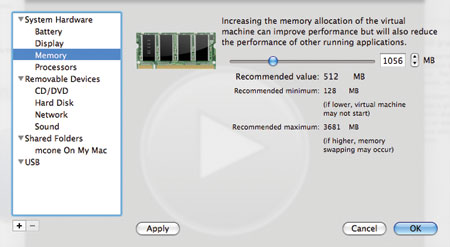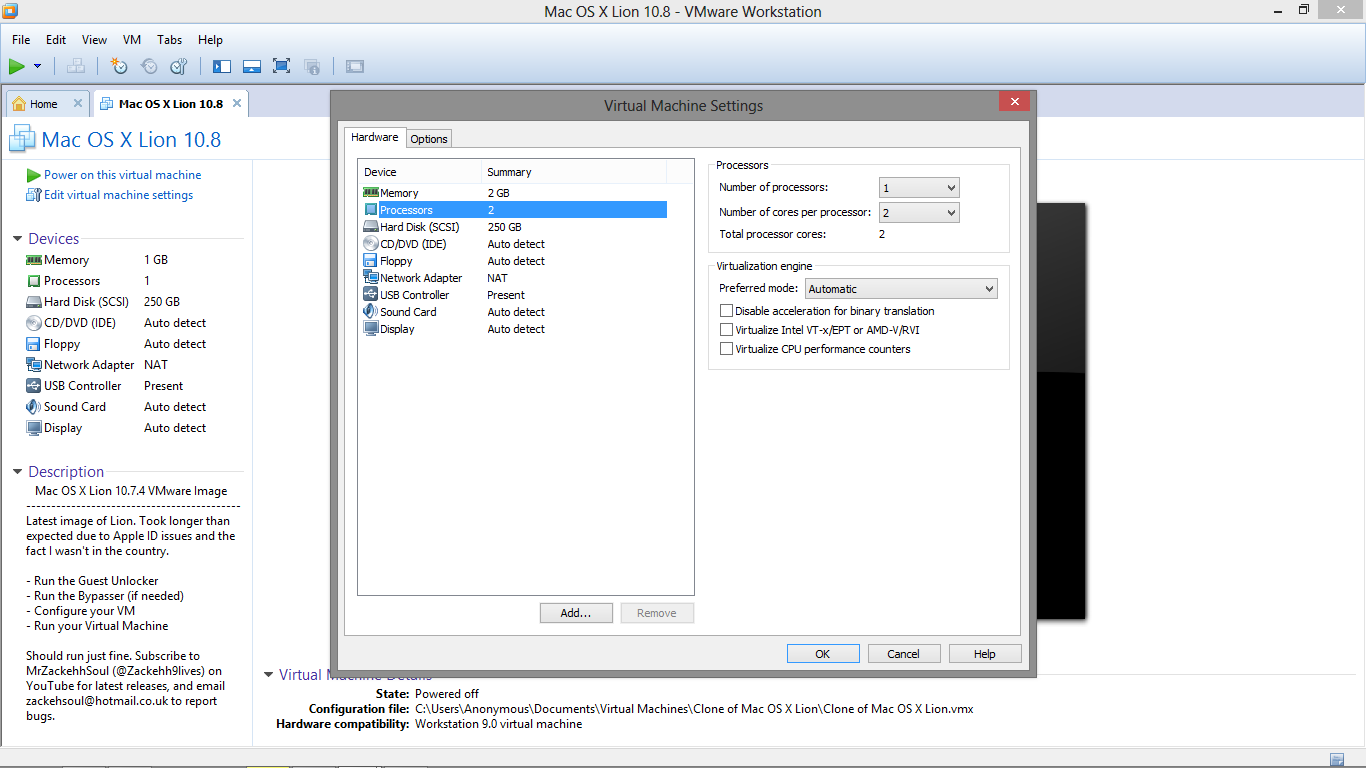
- #How to enable mac os x in vmware how to
- #How to enable mac os x in vmware license key
- #How to enable mac os x in vmware mac os
- #How to enable mac os x in vmware serial
- #How to enable mac os x in vmware Patch
Once activated, you can start installing macOS. When you’ve completed that, restart your computer.
#How to enable mac os x in vmware serial
It will prompt you to enter a serial number, which you’ll find in the same folder where you installed the virtual machine. Follow these steps:Īfter you’ve installed VMware, open a command prompt. But before you go ahead, make sure you’ve enabled Intel Virtualization Technology in your bios.
#How to enable mac os x in vmware mac os
You can install Mac OS Sierra on Windows 10 using VMware Workstation. You may be wondering if you can install MacOS Sierra onto your Windows 10 PC. READ ALSO: What is Log Level in Linux? Can macOS Run on VMware Workstation?

The most popular versions of macOS for ESXi include macOS High Sierra and macOS Mojave.

#How to enable mac os x in vmware Patch
Be sure to avoid installing the macOS unlocker patch on a production ESXi server, though, as it can negatively impact the performance of your production VMs. Installing the free patch on your ESXi server is another way to get macOS on your PC. To install macOS on VMware VMs that run on ESXi, you’ll need to create a bootable ISO image of the latest version of the operating system. However, you should be careful not to go too low, as you need enough room for your operating system and any apps. You should know that you can change the default size of your virtual hard disk and still use macOS. You might have trouble installing macOS on your PC, but VMware’s macOS option can help you get started.
#How to enable mac os x in vmware how to
One of the first things you need to know when running a virtual machine is how to get macOS options in VMware. For added security, you may want to choose “More Isolated” instead of “Easy Install”. You’ll need your Windows key from Microsoft Imagine to do this. To install the Mac OS VM, choose the “Easy Install” option. From here, you’ll need to create a new VM using either an image or disc. When the installer finishes, you may need to enter your license key, which should be available on the download page. Once you’ve found the latest version, you can install it.
#How to enable mac os x in vmware license key
You can also check the license key through the “About this Mac” page. You will then need to restart your PC to get it activated.īefore you install the Mac OS X VM on your Windows PC, check the version number of VMWare in the “About this Mac” menu. Once you have the macOS Monterey ISO, you can install it from VMware workstation pro. This step will take about 30 minutes, but the process is worth it. Make sure you have the correct disk format for macOS – the default is Mac OS Extended (Journaled). Once the installation completed, you can continue installing VMware Tools on macOS.Once you have VMware installed on your PC, the next step is to get your Mac OS Monterey ISO. Follow the instruction shown on your screen until completed. Now you are ready to install macOS Mojave. From the macOS Utility window, click Install macOS. Make sure you choose APFS and GUID Partition map. When you reach the following page, click Disk Utility.Īnd then, click your VMware hard drive and click Erase. I will show you the important steps only.Īfter choosing the installation language, we need to format our disk for macOS installation. I will not show the complete installation step here because it will make this post super long. Start the macOS Mojave Virtual MachineĪt this point, we are ready to start our VM. In my case, it would be Mojave.vmx because Mojave is the name of my virtual machine. Open your virtual machine directory and look for. This way to ensure the macOS Mojave work well.Ĭlick New CD/DVD (SATA) and then provide the location for the macOS Mojave ISO file you downloaded on the previous step. On the hardware settings, make sure you assign more than 8 GB of memory and minimum 2 processors. On the next page, click Customize Hardware to change some default settings. Give a name and location for the new virtual machine

Please note that if you don’t run the unlocker, you will not see the Apple Mac OS X on the Guest Operating System list above. Select Apple Mac OS X from the Guest Operating System list and choose version macOS 10.14.

Choose I will install the operating system laterĬlick Next. Open VMware and click Create a New Virtual Machine.


 0 kommentar(er)
0 kommentar(er)
